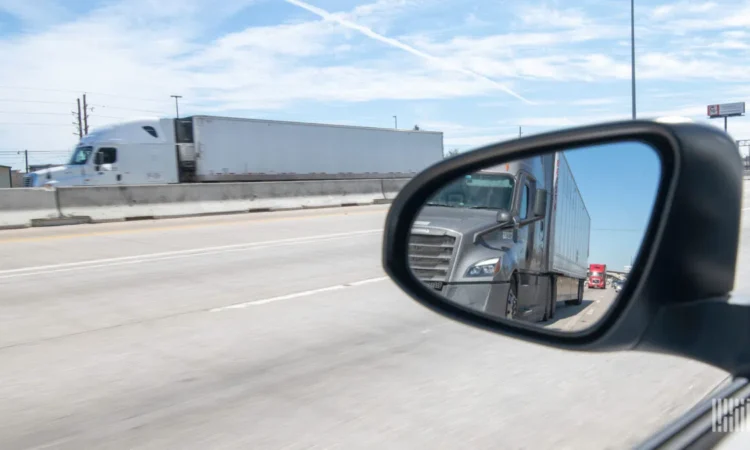Whether it is a last-mile van, or over-the-road truck, technology is available to help
As the effects of the climate crisis grow, logistics organizations are increasingly choosing to work with companies that have sustainability initiatives in place. It’s no surprise that during Earth Week we saw many companies publicly announce goals to reduce their carbon footprints. Companies are not only looking at the environmental impact of their own operations, but they are also looking at indirect greenhouse gas emissions within their value chains, so-called Scope 3 emissions. According to Sentieo, the number of mentions in quarterly earnings calls for Scope 3 emissions increased over 1,300% from 2019 to 2021. Among pollution caused by supply chains, the Rocky Mountain Institute estimates that the transportation of goods and materials is responsible for about a quarter of Scope 3 emissions.
As the topic of supply chain emissions and especially the transportation of goods is placed under a magnifying glass, many organizations are rushing to look for technology to provide solutions to reduce emissions as soon as possible. While the electrification of our transportation system is key, we are still years away from making the impact that we need today. ACT Research in its latest report, Charging Forward: 2020-2040 BEV & FCEV Forecast & Analysis, predicts there will only be 317,000 electric Class 4-8 vehicles by 2040.
By engaging with their transportation and logistics networks, fleets and shippers have more immediate ways they can start making progress towards their sustainability initiatives.
Electrify last-mile deliveries
The World Economic Forum estimates that demand for last-mile delivery in the world’s 100 largest cities would cause related emissions to rise by nearly one-third if the status quo remains. But there’s no reason to be content with the status quo.
Vans and step vans in the U.S. and Canada used in last-mile delivery are 100% electrifiable right now, and the cost is comparable to internal combustion engines. The transition to cost parity happened quicker than most expected, said Mike Roeth, executive director of the North American Council for Freight Efficiency. Electrifying package-delivery vehicles would reduce gas consumption by 5 million gallons a year, which is equivalent to avoiding about 43.5 million tons of carbon dioxide emissions, according to a joint report by NACFE and the Rocky Mountain Institute.
Amazon, FedEx, UPS, and other parcel delivery companies have made big investments to electrify their fleets. To celebrate Earth Day, FedEx drove a Brightdrop electric van from New York to Washington, D.C. on a single charge. FedEx is the first customer of Brightdrop, the startup created by General Motors.
Retrofit existing Class 8 diesel fleets
The conversion to electric for long-haul trucks will take longer because the technology is immature and expensive. But carriers and shippers can’t afford to wait for more sustainable solutions, especially with the surge in average diesel prices this year. A new class of emission-reducing active technologies that can be retrofitted to existing trucks has the potential to improve fuel efficiency by as much as 15%.
New emission-reducing technologies address aerodynamics, proper tire pressures and rolling friction, and tractor-cab energy utilization. These technologies improve efficiency for all fuel types including electric when it is available.
If cost is a barrier to modernizing existing diesel fleets, we have to figure out a way to make upgrades affordable. Economic incentives have increasingly been used to control pollution and improve environmental protection and should be considered to aid the vital trucking industry in the transition to a zero-emission future. One proposal could be particularly useful: A bipartisan bill called the Supporting Trucking Efficiency and Emission Reductions (STEER) Act would assist fleets in purchasing and installing fuel-saving, emission-reducing technologies.
Driver collaboration and performance incentives
Everybody has a role to play in addressing climate change, including truck drivers. Industry experts say that a driver can have as much as a 30% impact on fuel efficiency.
We know it’s sometimes difficult to make changes in routines, but American Truck Business Services (ATBS) offers suggestions on how to drive for maximum fuel efficiency. Drivers are probably familiar with some of these tips, but there’s no harm in a refresher.
Fleets are also adopting new in-cab technologies to help coach and incentivize drivers for fuel-efficiency. These innovations increase driver engagement through a fair measurement and feedback system that accounts for real-world complications, such as load, weather, and traffic— giving the driver personalized, transparent, and achievable goals.
We collectively need to do what is right for our environment, but in a way that is sustainable for our businesses as well. We can start taking advantage of opportunities today that address climate change while also capturing savings on fuel by engaging and collaborating within your supply chain and transportation networks.


